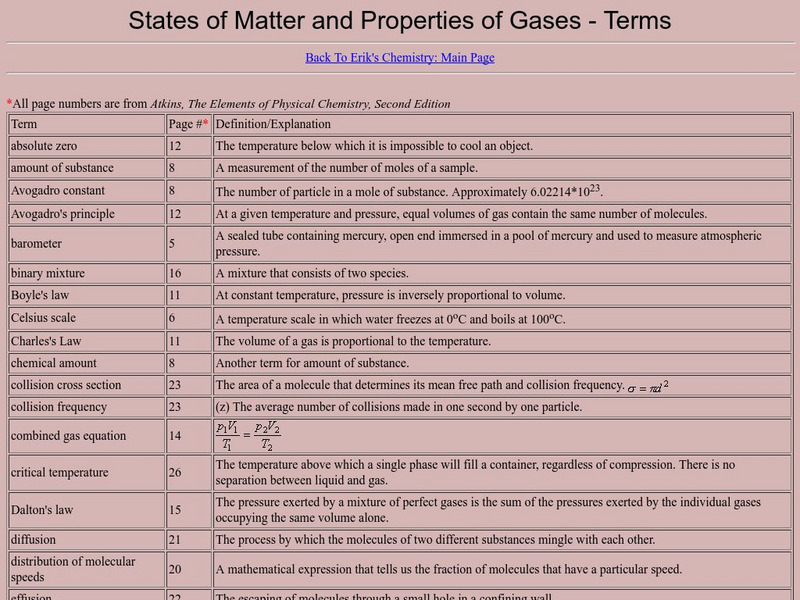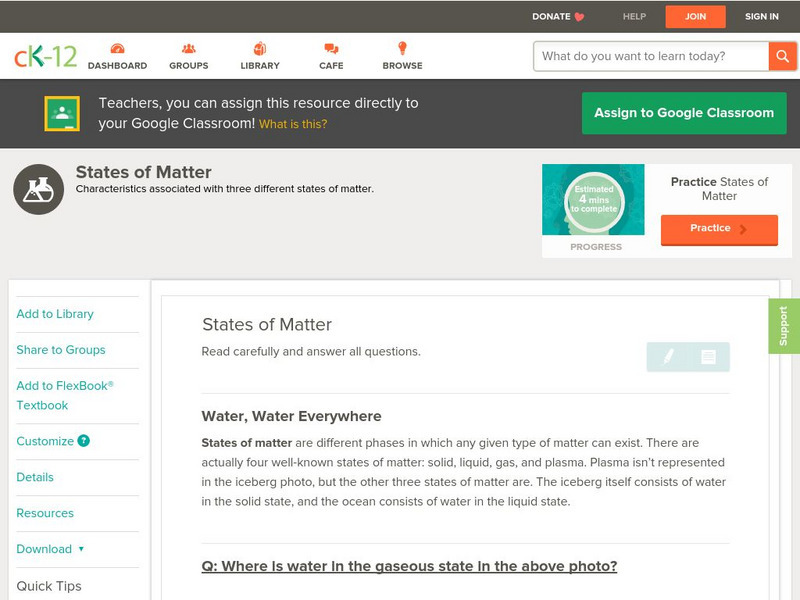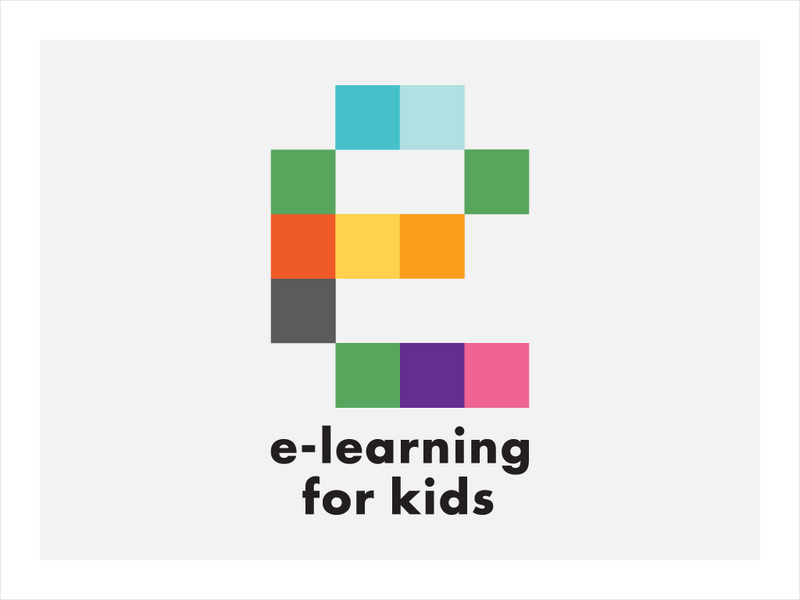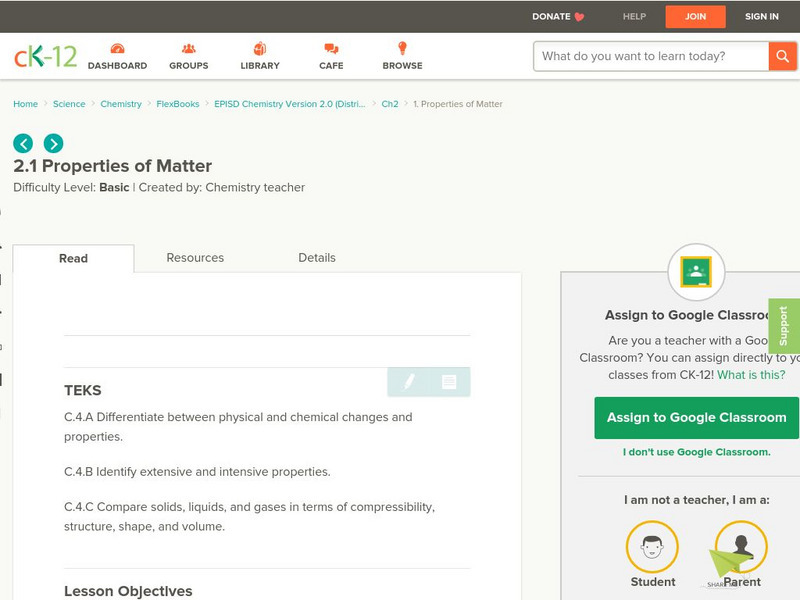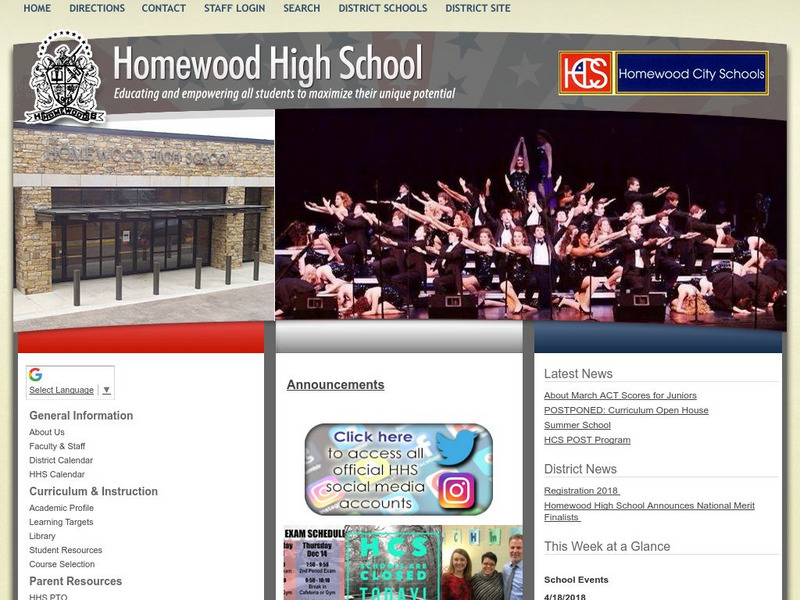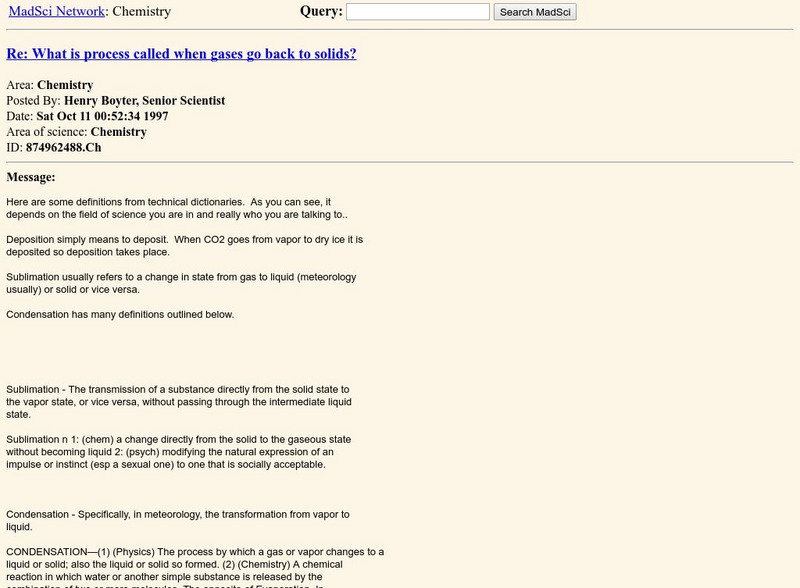Hi, what do you want to do?
Curated OER
Matter
A brief site which defines solids, liquids and gases along with a drawing of each.
ClassFlow
Class Flow: Gases Around Us
[Free Registration/Login Required] Through this unit children learn that gases are materials and can be distinguished from solids and liquids by their properties. They also learn about the uses of some important gases and where gases can...
TeachEngineering
Teach Engineering: Traveling Sound
Students explore how sound waves move through liquids, solids and gases in a series of simple sound energy experiments. Understanding the properties of sound and how sound waves travel helps engineers determine the best room shape and...
TeachEngineering
Teach Engineering: The Energy of Music
Students are introduced to sound energy concepts and how engineers use sound energy. Through hands-on activities and demonstrations, students examine how we know sound exists by listening to and seeing sound waves. They learn to describe...
Other
States of Matter and Properties of Gases: Terms
A very complete list of terms that are important to the study of gases. This resource is a web archive.
Wikimedia
Wikipedia: Materia
Explore the concept of matter in this Spanish-language encyclopedia entry. This site features the properties of matter, the Law of Conservation of Matter, and other important features of matter.
CK-12 Foundation
Ck 12: Chemistry: States of Matter
[Free Registration/Login may be required to access all resource tools.] Definition of state of matter and the three common states of matter and their differences.
Curated OER
Matter
A brief site which defines solids, liquids and gases along with a drawing of each.
Curated OER
Friction Is a Force That Moves in an Opposite Direction to Movement.
This resource provides a brief overview of friction. Its' affects on solids, liquids and gases is described with diagrams. An explanation of how friction is measured is included in the discussion. An online quiz can be used to check your...
E-learning for Kids
E Learning for Kids: Science: Loch Ness: What Happens When Solids and Liquids Are Heated or Cooled?
Students will look at what happens to different types of matter when they have a change of state.
PBS
Pbs Learning Media: Mechanical Waves
Learn about mechanical waves, which transfers energy from one place to another through liquids, gases and solids, with this interactive lesson.
Children's Museum
The Children's Museum of Indianapolis: Exploding Baggies
Learners will witness a fascinating chemical reaction and learn how to identify when a reaction has occurred by combining simple ingredients.
Children's Museum
The Children's Museum of Indianapolis: Color Changing Milk
Students observe a molecular dance of bursting colors through exploring states of matter and learning that materials can be characterize by how they respond to water.
Children's Museum
The Children's Museum of Indianapolis: Tie Dye Paper
Learners characterize materials by their state of matter and then combined materials to create a piece of colorful, tie dye-esque paper.
eSchool Today
E School Today: What Is Matter
Learn about matter, its three states, changes of state, how matter behaves, and physical and chemical changes in matter.
CK-12 Foundation
Ck 12: Properties of Matter
[Free Registration/Login may be required to access all resource tools.] In this online tutorial, students will begin to understand a substance according to its physical properties. Learn to distinguish between extensive and intensive...
Museum of Science
The Atom's Family: Phases of Matter
Help the Phantom choose a material and observe the changes at different temperatures in the molecule chamber. What happens to the elements or molecules as the temperature changes?
Other
Teaching Ideas for Primary Teachers: Science Ideas
A great resource to discover fun new activities to use in your classroom. Activities are age-appropriate, and span several science topics.
Other
Homewood City Schools: Classification of Matter
This Homewood City Schools site has an outline form and contains lots of information about the classification and composition of matter. Some of the topics covered are matter and temperature, changes in state, composition of matter, and...
Channel 4 Learning
4 L: Science Essentials: Material World
Learn about topics related to the material world. Each topic includes facts, a glossary, an interactive quiz, printable worksheets, an image bank, and web links.
Oklahoma State University
Oklahoma State University: Chem 1215: Periodic Table
Explains different sections of the periodic table, and how they are used.
Science Education Resource Center at Carleton College
Serc: Polymers & Plastics: Classification & Models
Young scholars will use their prior knowledge about changes of matter including physical and chemical changes to examine and categorize various types of plastics (polymers). They will identify how their chemical properties allow them to...
PBS
Pbs Learning Media: Phases of Matter: Interactive Lesson
Learn about the three phases of matter, and how the addition and removal of thermal energy (also known as heat) affects them.
MadSci Network
The Mad Scientist Network: Chemistry
The question "What is process called when gases go back to solids?" is discussed in detail. A comparison of the processes of sublimation, deposition and condensation is made.









